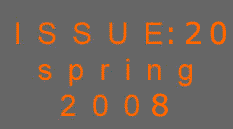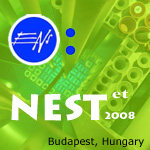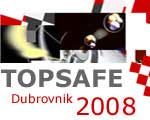ENS NEWS N° 20, spring: Intro
Throughout the recent protracted winter the
nuclear community has experienced a hive of activity. Now that
spring has finally decided to show up that preparatory work is
beginning to bear fruit. This time of year is the traditional
conference season and the nuclear community has been spoilt for
choice with a plethora of conferences on offer. Of course, many
of these conferences - like RRFM and PIME and FORATOM’s
flagship biannual conference ENA - are well-established events.
The issues under discussion, like security of supply, climate
change, reactor design, safety, waste and fuel management are
recurring ones. But I’m sure that I am not alone in detecting
that conferences are beginning to reflect the confident new spring
in the nuclear family’s step. An experienced journalist
who regularly writes on energy matters recently told me that
he had attended several of these conferences in the past and
had come to the conclusion that they are invariably the same – a “nuclear
jamboree” where the same people discuss the same old issues
with the same decision-makers and fail to address the genuine
concerns of ordinary people. His assessment is, to say the least,
a bit harsh.
Naturally, conferences provide a platform for the industry to
put its case to decision-makers and to showcase its cutting edge
research. That’s one of the main reasons why they are organised.
They might not always generate the kind of news that sells newspapers,
but the issues that are discussed are nonetheless of fundamental
interest to readers. And they also give the industry a chance
to network with an ever- wider range of stakeholders.
Perhaps our journalist friend hasn’t attended a nuclear-related
conference recently. Had he done so he couldn’t have failed
to notice that the focus and approach of these conferences have
changed subtly. Press coverage following record media participation
at ENA 2008 (the journalist in question chose not to attend)
threw up banner headlines like “Piebalgs goes
for nuclear,” “Nuclear
energy vital in climate fight, says EU Commissioner” or “EU
energy chief seeks boost in nuclear investments.” In his
widely-quoted opening speech Commissioner Pieblags emphasised
that : “Nuclear energy has proven to be a stable,
reliable energy source, relatively shielded from price fluctuations.
It
fulfils an important requirement of all of three pillars of EU
energy policy, which are competitiveness, security of supply
and sustainability.” Radical statements like this by senior
politicians seem light years away from the earlier tendency to
dismiss nuclear energy as a taboo subject.
The nuclear revival has raised the stakes for the industry and
politicians alike. It has given renewed impetus and relevance
to existing issues and generated new ones. And conference agendas
are increasingly reflecting this reality. Of course, issues like
security of supply, combating climate change and managing radioactive
waste still feature high on conference agendas. That’s
because they remain fundamentally relevant to Europe’s
current energy context. However, conferences are now beginning
to cover a wider range of issues like the financing of nuclear
new build, the forging of Europe’s low-carbon economy,
the reactors of tomorrow and training and educating the next
generation of nuclear scientists and engineers. This has encouraged
more stakeholders to the debating table, including economists,
investment banks, think tanks, environmentalists and consumer
groups. Each one brings a new perspective, lays down a new challenge
or provides a new take on the nuclear revival. This makes for
a more inclusive and dynamic debate. So, is this really just
another case of the “same people discussing the same old
issues in the same old way?” Well, when it comes to content
and political announcements conferences like ENA 2008 can hardly
be accused of being mere partisan exercises in introspection.
Perhaps it’s high time our journalist friend saw the bigger
picture and participated in another nuclear conference.
At the same, the level of expectancy among conference-goers
is increasing. They want to participate in lively debates and
see common positions and recommendations emerge. They want to
hear the industry articulating the right messages to the right
audience in a loud and confident voice. Of course, there is still
plenty of room for improvement and some conference are more focused
than others, but, judging from feedback received from recent
conference-goers, things are gradually heading in the right direction.
Do you agree?
The news section of ENS NEWS N° 20 starts with the traditional
Word from the President. On this occasion David Bonser congratulates
the Swiss Nuclear Society on its fiftieth anniversary and reflects
upon the special place that they have in the history of nuclear
science and development in Europe.
Sociologists have often analysed why so many people are afraid
of nuclear energy. Andrew Teller, in his thought-provoking column,
looks at the question from a different angle, preferring to answer
the recent claim made by an anti-nuclear commentator that it’s
impossible not to be afraid of it.
Issue N° 20’s events section is crammed with information
on the busy international conference season that I spoke about
earlier. It contains two reports on PIME 2008, one a detailed
blow-by blow account for those of you who weren’t able
to attend and the other an appraisal by our friends from Nuclearelectrica,
in Romania.
RRFM needs no introduction. It is a flagship event on the ENS
conference calendar. ENS NEWS features a review of the 2008 conference
in Hamburg from a Young Generation Nuclear perspective.
Last but not least, the biannual European Nuclear Assembly (ENA
2008) organised by FORATOM, which was attended by several ENS
members, is put under the ENS NEWS microscope. The important
developments that are shaping the course of EU energy policy
are of fundamental interest to the present and future of the
nuclear science community and the ENA 2008 programme accurately
reflected the growing political impetus behind the nuclear revival.
The Member Societies and Corporate Members section covers a
wide range of issues and discussion points, including an IAEA
report on the recent OSART mission; a report from the Advanced
Reactor Group of CEIDEN (the National Technological Platform
for Nuclear Fission Research), in Spain; an analysis of the neutron
flux, fuel and moderator temperature transients in research reactors
and a “Nuclear Leadership Awareness Workshop,” in
Rome.
Our colleagues from the Young Generation network (YGN) then
turn readers’ attention to how the nuclear industry is
portrayed in the media – more especially in the television
series The Simpsons. For those of us who might not be switched
on to The Simpsons, the main character, Homer Simpson, works
at a fictional nuclear power station somewhere in the US. This
cult programme presents nuclear energy in a satirical way and
highlights common stereotypes. Judge for yourself…..
The European Institutions section features an EU Affairs training
course organised in January by FORATOM. Its aim was to introduce
a variety of stakeholders to the institutional set-up in Brussels
and to the objectives and work of the nuclear lobbying fraternity.
Finally, some NucNet reports provide us with nuclear news from
around the globe.
Enjoy ENS N° 20, and the spring….if it has reached
you yet!
|

Mark O’Donovan
Editor-in-Chief, ENS NEWS
|
|
|




